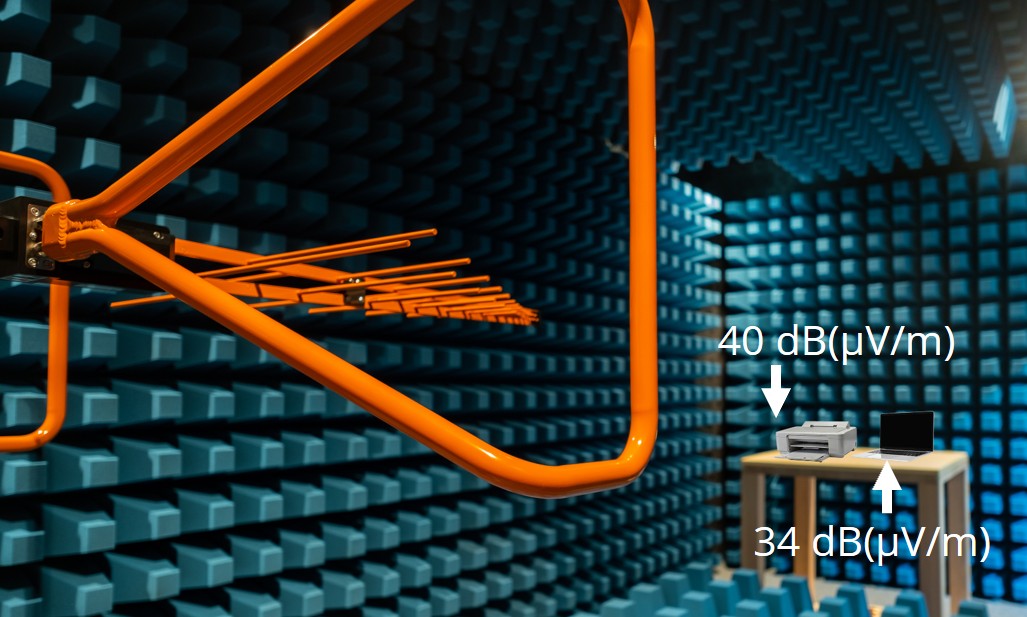EMC Question of the Week: September 8, 2025

Two devices in an EMI test setup contribute to radiated emissions at 85 MHz. One produces a radiated field strength of 40 dB(μV/m) at the measurement location. The other produces a radiated field strength of 34 dB(μV/m) at the same location. What is the measured field strength from both sources?
- 41 dB(μV/m)
- 43.5 dB(μV/m)
- 71 dB(μV/m)
- 74 dB(μV/m)
Answer
The best answer is “a.” The field strength from the first device is 40 dB(μV/m) = 100 μV/m. The field strength from the second device is 34 dB(μV/m) = 50 μV/m. The sources are independent (i.e., they do not have a fixed phase difference), so the test receiver measures the sum of their power densities. The measured field strength is the rms sum of the field strengths,
Note that if the sources had been correlated (e.g., two signals derived from the same clock), they might have added in-phase, out-of-phase, or anything in between. In this case, the resulting emissions could have been anywhere from 0 to 150 μV/m.
If both sources were highly directional with different angles of maximum radiation (unlikely at 85 MHz), the measured field strength would be somewhere between 40 dB(μV/m) and 41 dB(μV/m).
Have a comment or question regarding this solution? We'd like to hear from you. Email us at
